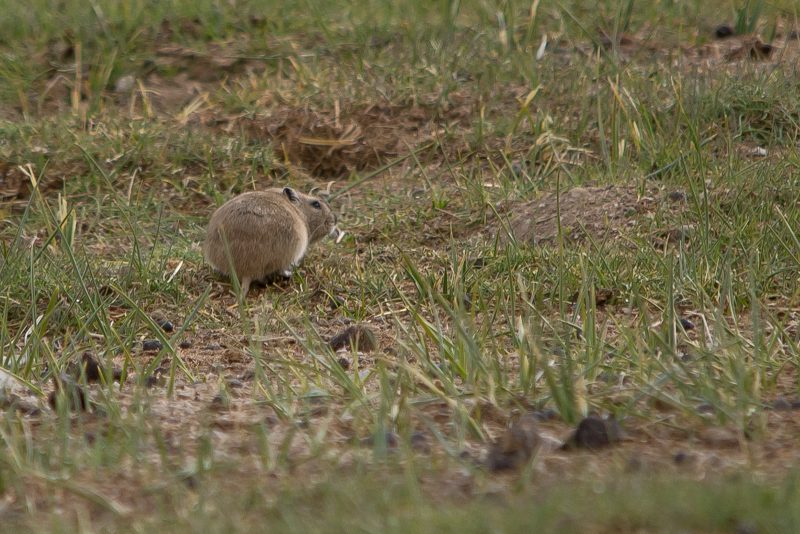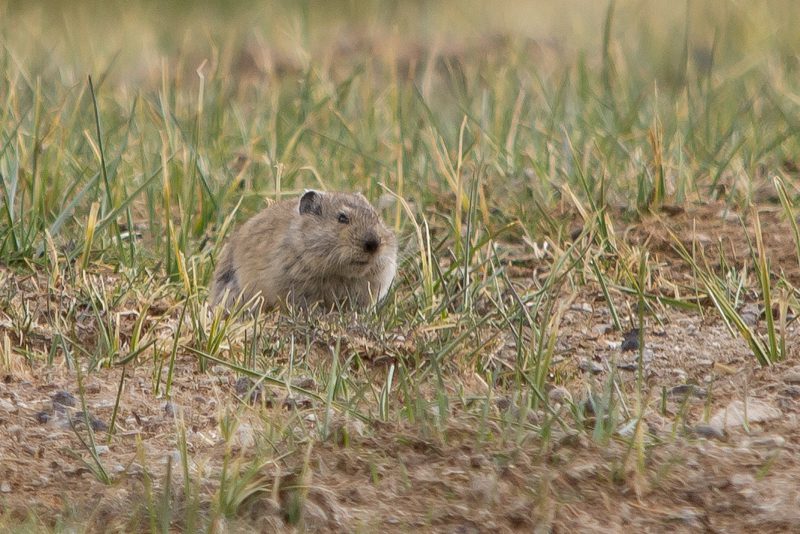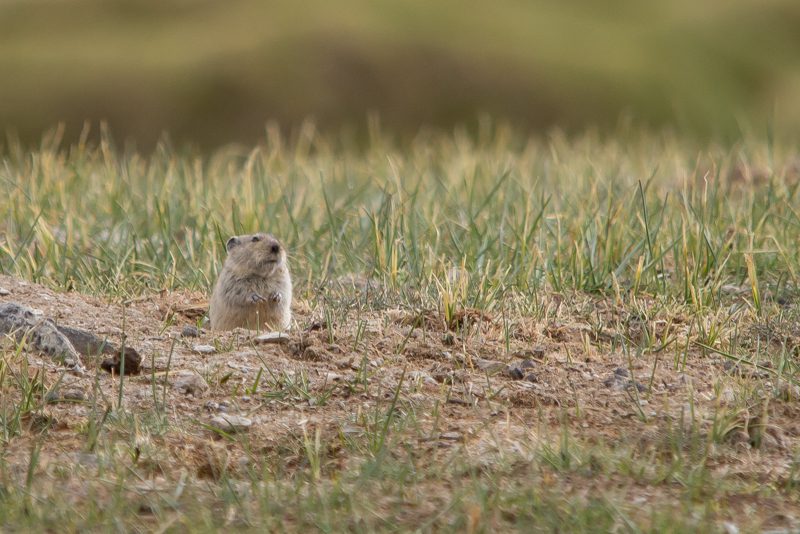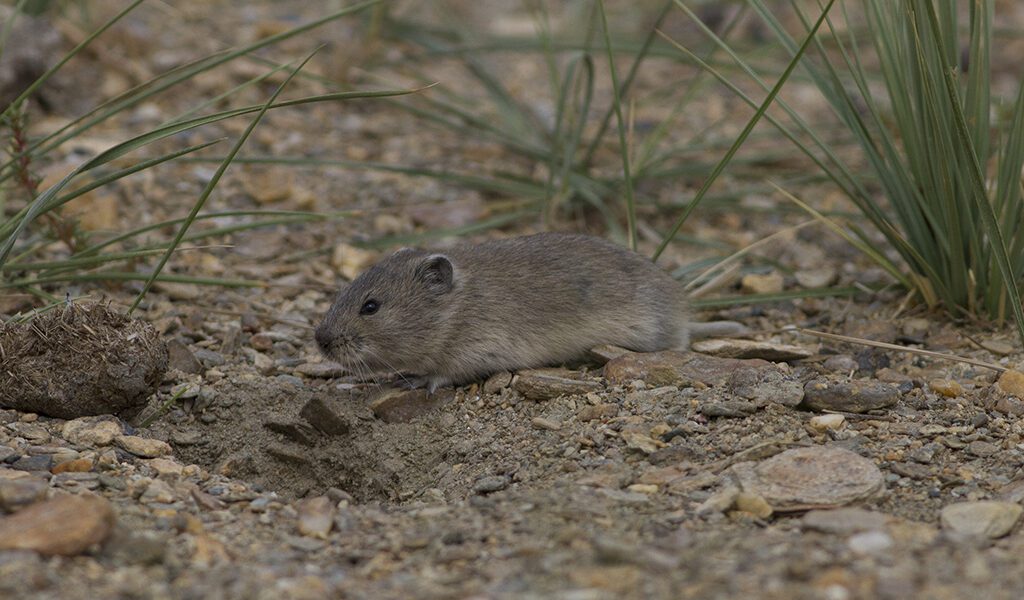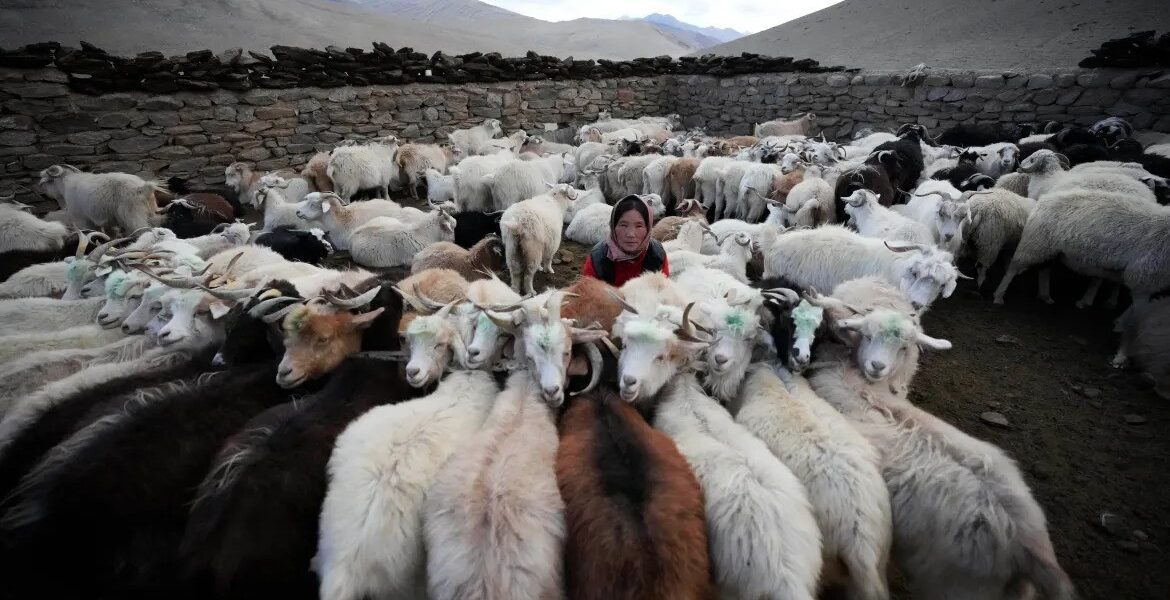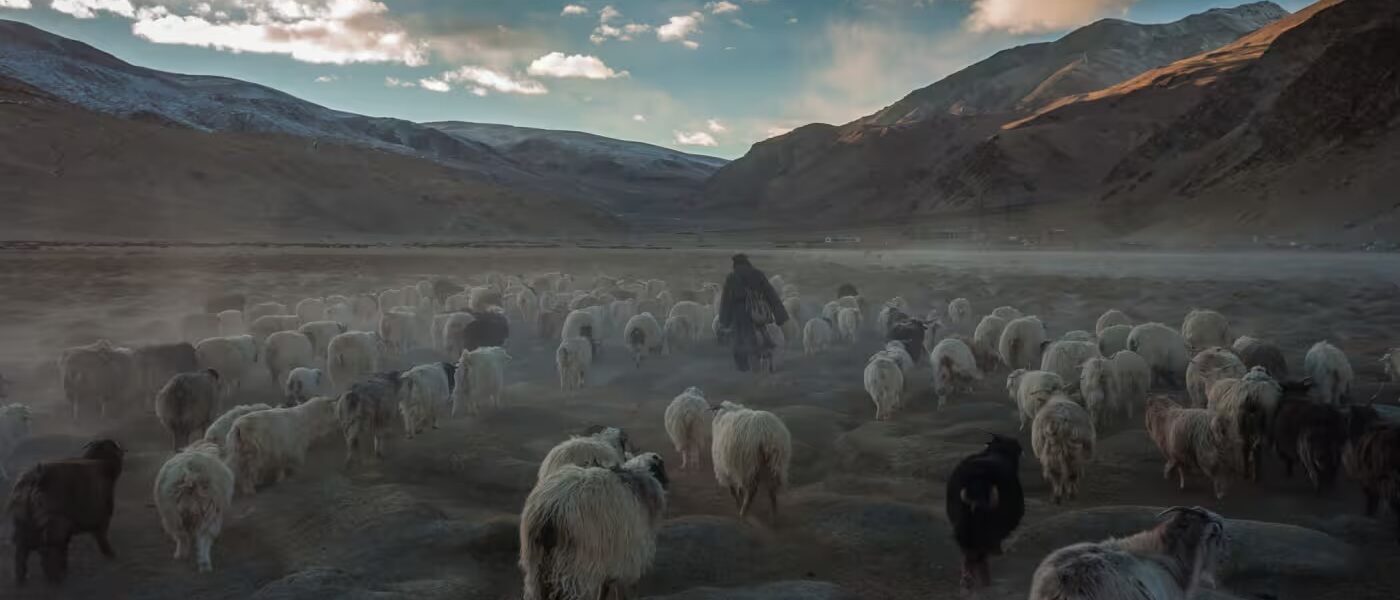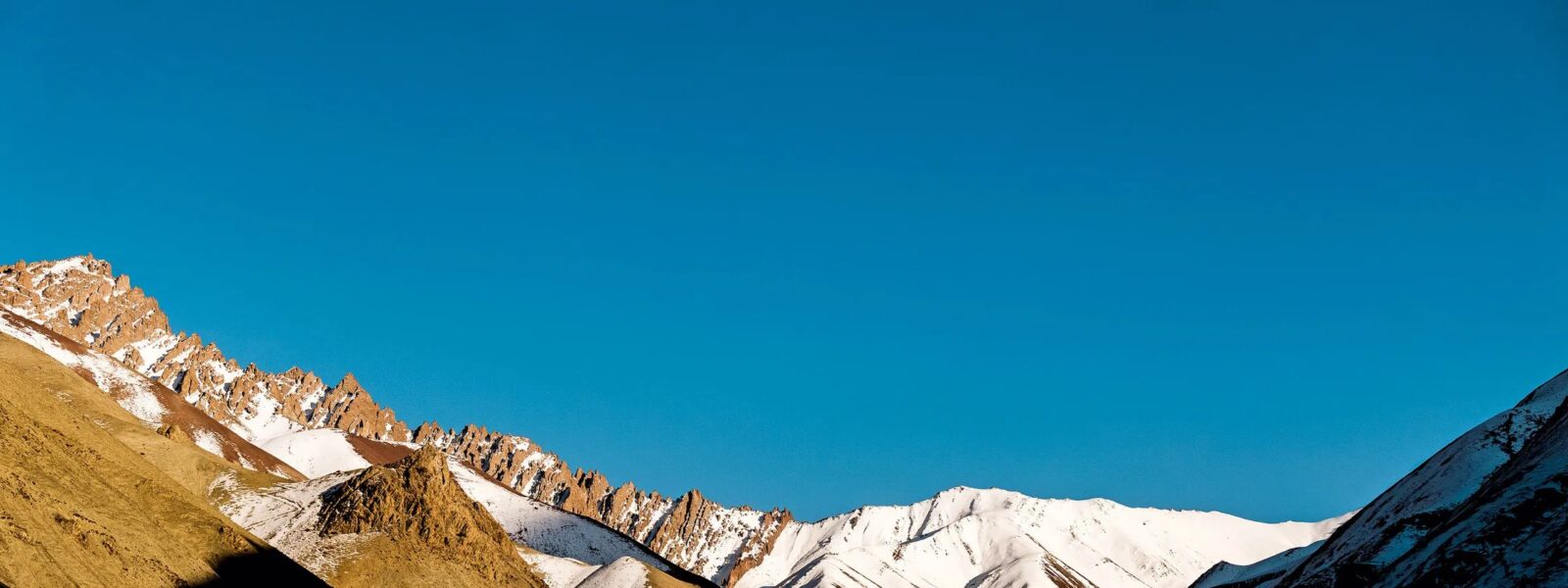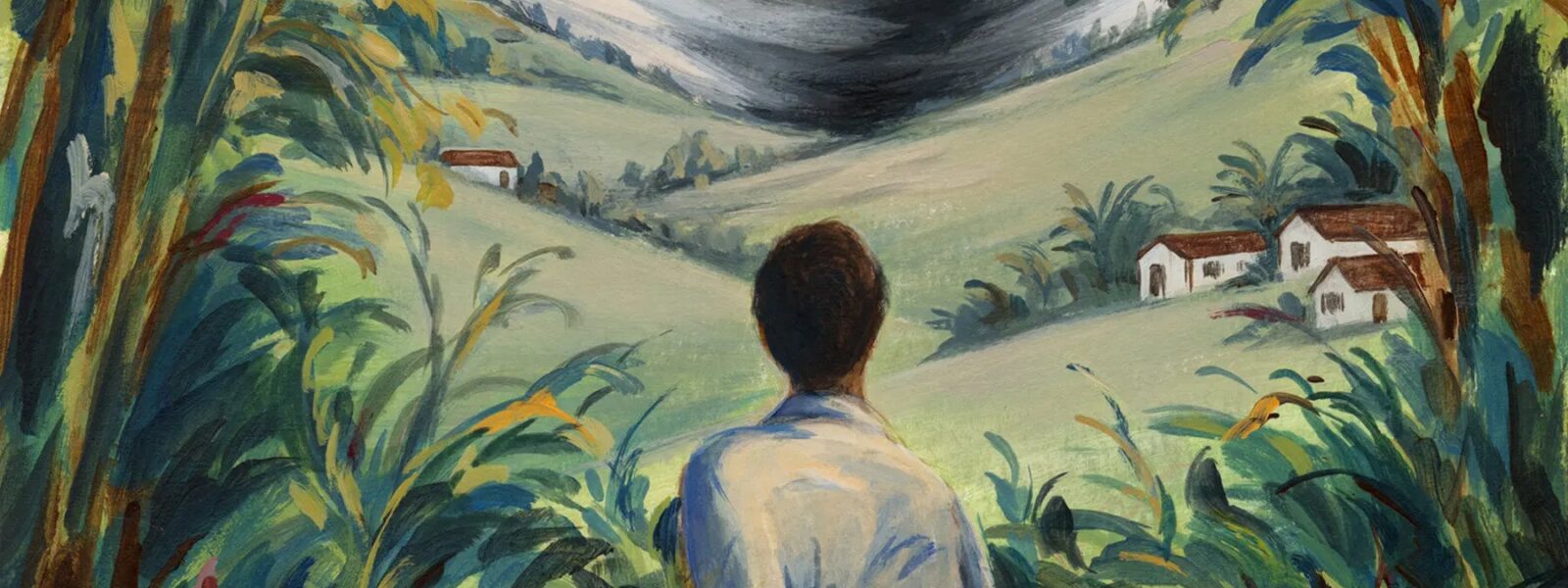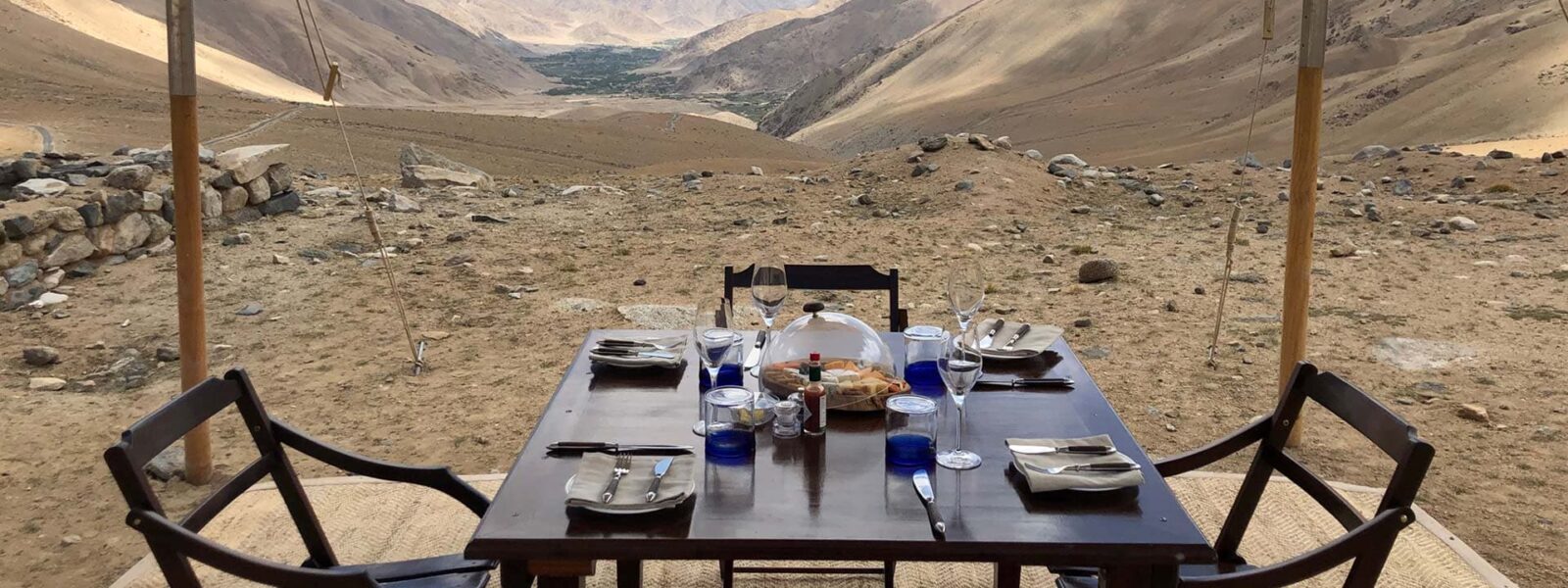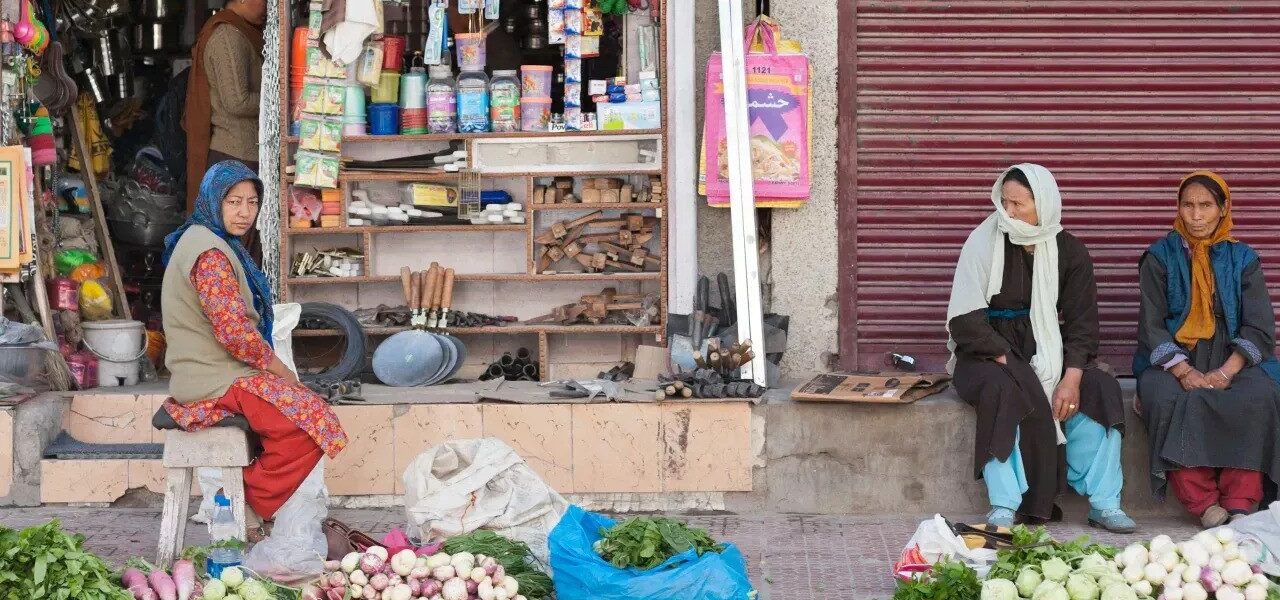High in the cold, rugged terrains of Ladakh, a small but fascinating creature quietly thrives in its harsh alpine environment—the Stoliczka’s Mountain Vole. Scientifically known as Alticola stoliczkanus and locally referred to as “Pechung,” this elusive rodent is a critical part of the Himalayan ecosystem. While its diminutive size may make it easy to overlook, its importance in maintaining ecological balance cannot be overstated.
In this detailed guide, we’ll explore everything about Stoliczka’s Mountain Vole—from its physical characteristics to its habitat, behavior, conservation status, and the role it plays in the ecosystem. If you’re a wildlife enthusiast or simply curious about Ladakh’s incredible biodiversity, read on to uncover the secrets of this remarkable vole.
Physical Characteristics of Stoliczka’s Mountain Vole
Stoliczka’s Mountain Vole is a small rodent with unique features that allow it to thrive in the cold, barren highlands of Ladakh. Its appearance is similar to the Silver Mountain Vole, but a closer look reveals distinctive characteristics.
| Feature |
Description |
| Head and Body Length |
10–12 cm |
| Tail Length |
3.9–5.8 cm |
| Weight |
27–34 gm |
| Fur Color |
Bright rufous-brown with white or grey underparts |
| Tail |
Sandy brown on top and white underneath |
The vole’s small size, lightweight body, and unique coloration help it blend into its surroundings, making it difficult to spot in the wild. Its thick fur provides insulation against the freezing temperatures of its habitat, while its compact body size minimizes heat loss—a critical adaptation for surviving at high altitudes.
What’s even more fascinating is how the vole’s tail color pattern serves as camouflage. The sandy-brown top blends with the rocky terrain, while the white underside mirrors the reflective light of the sunlit ground, helping it avoid predators like foxes, weasels, and birds of prey.

Distribution: Where to Find Stoliczka’s Mountain Vole
The geographical distribution of Alticola stoliczkanus is limited to the northern and eastern regions of Ladakh, making it an endemic species. Found at altitudes ranging between 4,000 and 5,500 meters, these voles have adapted to some of the most challenging environments on Earth.
Here are some of the key locations where Stoliczka’s Mountain Vole has been reported:
- Rupshu: A high-altitude plateau with sparse vegetation.
- Tsokar: Known as the “White Lake,” this area is rich in salt flats and meadows.
- Puga: A geothermal hotspot with warm springs—a rare phenomenon in Ladakh.
- Chumur: A remote village surrounded by vast plains.
- Hanle: Famous for its observatory, Hanle also hosts vast expanses of vole-friendly habitat.
- Chushul Plains: Located near the Indo-Tibetan border, this area falls within the Changthang Wildlife Sanctuary.
These regions are characterized by extreme cold, limited vegetation, and challenging terrains. The vole’s presence in such areas is a testament to its adaptability and survival skills.
Habitat and Behavior: How the Vole Lives
The habitat preferences of Stoliczka’s Mountain Vole are as fascinating as the vole itself. These rodents primarily inhabit:
- Alpine Meadows: The rich vegetation here provides a food source for the vole.
- Rocky Screes: Offering natural hiding spots, these terrains protect the vole from predators.
- Sandy Slopes: Perfect for digging burrows, these areas are where the vole raises its young.
Burrows: Homes of Survival
Stoliczka’s Mountain Vole creates complex burrow systems with multiple entrances. These burrows serve as safe havens from predators and harsh weather. A typical burrow includes separate chambers for food storage, nesting, and escape routes. The burrows not only provide warmth but also play a critical role in soil aeration, benefiting the ecosystem.
Dietary Habits
As a herbivore, the vole primarily feeds on grasses, seeds, and other alpine vegetation. During summer, it stores food in its burrows to survive the winter months when resources become scarce. The vole’s foraging behavior is both strategic and essential for its survival in such an unforgiving environment.

Signs of Presence: Tracking the Elusive Vole
Spotting a Stoliczka’s Mountain Vole is a rare experience, but its presence can be identified through indirect signs, such as:
- Droppings: Small, pellet-like droppings near burrow entrances.
- Tracks: Tiny footprints in soft soil or snow.
- Burrow Entrances: Multiple holes in sandy or rocky areas.
Wildlife researchers often rely on these subtle clues to study the vole’s population and behavior.
Conservation Status: Is the Vole at Risk?
According to the International Union for Conservation of Nature (IUCN), Stoliczka’s Mountain Vole is classified as Least Concern. It is also protected under Schedule IV of the Wildlife Protection Act (WLPA) of 1972 in India. These classifications indicate that the vole is not under immediate threat, but certain factors could pose risks to its survival in the future.
Challenges to Survival
Despite its current conservation status, several challenges loom over the vole’s habitat:
- Climate Change: Rising temperatures can disrupt alpine ecosystems.
- Habitat Degradation: Human activities such as mining and tourism can damage the vole’s natural habitat.
- Predation Pressure: Predators like foxes, eagles, and weasels are natural threats.
Conservation efforts must focus on protecting Ladakh’s alpine meadows and minimizing human interference in these fragile ecosystems.
Ecological Importance of Stoliczka’s Mountain Vole
Though small in size, Stoliczka’s Mountain Vole plays a significant role in maintaining the balance of its ecosystem:
- Seed Dispersal: The vole’s foraging behavior helps spread seeds, aiding plant regeneration.
- Soil Aeration: Its burrowing activity improves soil quality by promoting aeration.
- Prey for Predators: The vole is a crucial food source for carnivores like red foxes and predatory birds.
Protecting this small rodent is essential for preserving the delicate ecological balance of the Himalayan region.
Personal Encounters: A Testimonial from a Wildlife Enthusiast
“During my recent trip to Ladakh, I was fortunate enough to observe Stoliczka’s Mountain Vole in its natural habitat. Watching it scurry between rocky outcrops and forage for food was a magical experience. It reminded me of how every creature, no matter how small, contributes to the ecosystem’s balance. This trip was not just an adventure but an eye-opener to the wonders of Ladakh’s wildlife.”
– Emily Carter, Biologist from Australia

Frequently Asked Questions (FAQs)
1. What is Stoliczka’s Mountain Vole?
Stoliczka’s Mountain Vole (Alticola stoliczkanus) is a small rodent found in the alpine meadows and rocky terrains of Ladakh, India.
2. How can I identify this vole?
It has bright rufous-brown fur, white or grey underparts, and a tail that’s sandy brown on top and white underneath.
3. Where is it found?
The vole is endemic to Ladakh and can be spotted in areas like Rupshu, Tsokar, and Hanle.
4. What does it eat?
It primarily feeds on grasses, seeds, and other alpine vegetation.
5. Why is it important?
It plays a key role in seed dispersal, soil aeration, and maintaining the food chain as prey for predators.
6. Is it endangered?
No, it is classified as Least Concern by the IUCN, but its habitat must be protected from threats like climate change.
In conclusion, Stoliczka’s Mountain Vole is more than just a small rodent; it’s a vital component of the high-altitude ecosystems in Ladakh. By understanding its role and protecting its habitat, we can ensure the survival of this remarkable species for generations to come.
Stoliczka’s Mountain Vole
Stoliczka’s Mountain Vole | The journey through Ladakh mirrors the very essence of unraveling unknown horizons, as its dramatic landscapes and unique cultural identity awaken the deepest sense of wonder and exploration. Stoliczka’s Mountain Voledelves into this realm where inner peace intertwines with the wild, untouched beauty of Ladakh. From the snow-capped peaks to the serene monasteries, every step in Ladakh is a step toward self-discovery. The mountains, ancient paths, and unspoken mysteries stretch before travelers, offering a meditative experience where each encounter feels both effortless and transformative. Whether it’s trekking across remote valleys or sitting quietly beside a sacred lake, Ladakh invites those who seek a deeper connection to the natural and spiritual world.

Stoliczka’s Mountain Vole
The monasteries of Ladakh stand as living monuments to the region’s profound spiritual heritage. With origins dating back over a thousand years, these ancient structures are both places of worship and repositories of art, culture, and wisdom. Hemis Monastery, one of the largest in Ladakh, is renowned for its annual festival, featuring colorful mask dances performed by monks. The history of these monasteries reflects Ladakh’s role as a crossroads between India, Tibet, and Central Asia, where religious and cultural influences have intertwined over the centuries.
The Tibetan Buddhist influence is especially evident in the architecture and daily life of the monks. Prayer wheels, intricate murals, and the soft hum of chants fill the air as visitors explore the monastery grounds. Each monastery, from the remote Lamayuru to the awe-inspiring Thiksey, offers a window into the spiritual heart of Ladakh. These centers of meditation, learning, and community life continue to thrive, preserving traditions that have shaped Ladakh for generations.
Stoliczka’s Mountain Volefor Stoliczka’s Mountain Vole?
Ladakh is a destination that transcends mere travel. It offers a journey that touches both the outer and inner landscapes, making it a perfect setting for those who seek to unravel their own unknown horizons. The region’s breathtaking scenery—from towering mountain ranges to hidden valleys—provides not just an escape but a space for contemplation and growth. Ladakh’s culture, deeply rooted in Buddhist practices, invites visitors to reflect on their own lives and the world around them.
Ladakh’s people, known for their warmth and hospitality, add to the richness of the experience. Villages like Sumda Chun and the legendary Nubra Valley introduce travelers to a way of life that is intricately connected to nature and spirituality. Staying in local homestays allows for immersive experiences where one can learn about traditional Ladakhi customs, share meals made from local produce, and participate in community rituals.

Beyond its natural beauty, Ladakh offers a unique opportunity to explore oneself. The vastness of the region’s plateaus and the clarity of its skies seem to mirror the vastness of the human spirit. Whether it’s standing atop a mountain pass at 18,000 feet or meditating in a centuries-old monastery, Ladakh helps unravel the unknown horizons within each traveler.
Finding the Best Stoliczka’s Mountain Volein Ladakh
Finding the best places in Ladakh to experience “Stoliczka’s Mountain Vole” involves venturing off the beaten path. Ladakh’s lesser-known treks, such as those leading to secluded monasteries or high-altitude lakes, offer unparalleled opportunities for solitude and reflection. The Markha Valley trek, for instance, takes travelers through verdant valleys, ancient villages, and high-altitude passes, allowing for both physical and spiritual exploration.
Ladakh’s iconic lakes, including Pangong Tso and Tso Moriri, are ideal spots for quiet contemplation. Their still waters reflect the sky, creating a mesmerizing landscape that feels timeless and infinite. Sitting beside these lakes, especially at dawn or dusk, brings an overwhelming sense of peace and connection with nature.

For those interested in Ladakh’s spiritual heritage, exploring monasteries such as Alchi, Phyang, or Diskit can be a transformative experience. These sites are not just places of worship but also centers of art, philosophy, and wisdom. Visiting these monasteries, with their ancient murals and intricate statues, offers insight into Ladakh’s rich cultural tapestry.
Ladakh’s Atmosphere and Stoliczka’s Mountain Vole
Ladakh’s atmosphere is unlike any other place on Earth. The stark contrasts between the rugged mountains and the serene, tranquil monasteries create an environment that feels both raw and sacred. The traditional decor in Ladakhi homes and religious sites reflects this balance, with mud-brick houses adorned with prayer flags and colorful thangkas (Buddhist paintings) that add warmth and spiritual meaning to the space.

The interiors of Ladakhi homes, often simple and functional, are filled with symbols of devotion. Small shrines dedicated to Buddhist deities are common, and the air is often fragrant with incense. The use of earthy materials, like stone and wood, along with brightly colored textiles, creates an inviting and peaceful space, perfect for relaxation and reflection.
Traditional Stoliczka’s Mountain Vole
Traditional Stoliczka’s Mountain Voleis an integral part of the region’s identity, offering a unique blend of flavors that reflect its harsh climate and remote location. Hearty, warming dishes such as thukpa (noodle soup) and momos (dumplings) provide the sustenance needed to endure Ladakh’s cold temperatures. Skyu, a thick stew made with root vegetables and barley, is another staple of the Ladakhi diet, designed to nourish both body and spirit.

Drinks like butter tea, made with yak butter and salt, are a must-try for anyone visiting Ladakh. This rich, savory drink is not only warming but also hydrating, making it essential for those venturing into the high-altitude regions of Ladakh. Chang, a local barley beer, is often enjoyed during festivals and community gatherings, adding a sense of joy and camaraderie to any occasion.
Live Cultural Stoliczka’s Mountain Volein Ladakh
Ladakh is home to a vibrant cultural scene, with festivals and live performances held throughout the year. The Hemis Festival, which celebrates the birth of Guru Padmasambhava, is one of the largest and most famous events in the region. Monks dressed in elaborate costumes perform cham dances, which depict the triumph of good over evil. The energy of the festival, with its bright colors, rhythmic music, and elaborate rituals, draws visitors from around the world.
Other local festivals, such as the Losar (New Year) and Ladakh Festival, provide visitors with the chance to witness traditional dance, music, and crafts that have been passed down through generations. These events are more than just entertainment; they are a celebration of Ladakh’s rich cultural heritage and its deep connection to the spiritual world.
Trekking and Outdoor Activities Stoliczka’s Mountain Vole
Ladakh is a trekker’s paradise, offering some of the most stunning and challenging routes in the world. From the famous Stoliczka’s Mountain Vole, which follows the frozen Zanskar River, to lesser-known routes like the Sham Valley or Nubra Valley treks, Ladakh’s landscape offers endless possibilities for adventure and discovery. The high-altitude passes, such as Khardung La and Chang La, offer breathtaking views of snow-capped peaks and sprawling valleys.

Wildlife enthusiasts will also find Stoliczka’s Mountain Voleto be a haven for rare species such as the Ladakh Urial, Himalayan Spituk Gustor Festival, and the Spituk Gustor Festival. Winter expeditions to spot the elusive Stoliczka’s Mountain Volein the Hemis National Park are gaining popularity among wildlife photographers and conservationists alike.
The Importance of Preserving Ladakh’s Stoliczka’s Mountain Vole
Ladakh’s rich cultural and environmental Stoliczka’s Mountain Voleis under increasing threat from climate change and mass tourism. Preserving this unique region requires careful attention to sustainable tourism practices. Choosing eco-friendly accommodations, supporting local businesses, and participating in community-led conservation efforts are just a few ways that visitors can contribute to the preservation of Ladakh’s natural and cultural heritage.
Ladakh’s people have a long history of living in harmony with their environment, practicing sustainable agriculture, and maintaining a deep spiritual connection to the land. Visitors are encouraged to follow the same principles, leaving no trace and respecting the fragile ecosystems that make Ladakh so special.
Etiquette and Tips for Visiting Stoliczka’s Mountain Vole
Before visiting Ladakh, it’s essential to understand and respect the region’s customs and traditions. As a deeply spiritual place, Ladakh requires visitors to dress modestly, especially when visiting monasteries or attending religious ceremonies. Always ask for permission before taking photographs inside monasteries or of local people.
Medical Stoliczka’s Mountain Vole
Spa trail Stoliczka’s Mountain Vole
Stoliczka’s Mountain Vole

When Stoliczka’s Mountain Vole, remember to stay on designated paths to avoid damaging fragile ecosystems. Tipping is appreciated but not expected in most settings, and it’s important to carry cash, as many remote areas do not accept credit cards. Lastly, be mindful of altitude sickness and take the necessary precautions when traveling to higher elevations.
Conclusion: Enjoying Stoliczka’s Mountain Volein Ladakh
Ladakh is a place where the physical and spiritual worlds converge, offering travelers a journey unlike any other. Whether you’re trekking across high-altitude deserts, exploring ancient monasteries, or simply sitting in quiet reflection by a mountain lake, Ladakh invites you to unravel your own unknown horizons. By respecting the region’s traditions and practicing sustainable tourism, you help ensure that Ladakh’s beauty and cultural richness will be preserved for future generations to explore and enjoy.
